#patanjali yoga sutras with meaning
Explore tagged Tumblr posts
Text
youtube
The Yoga Sutras, Sadhana Pada – The Path of Practice, Spiritual Practice, Yoga of Action, Karma.
#yoga sutras of patanjali#patanjali yoga sutras art of living#patanjali yoga sutras#yoga sutras#patanjali yoga sutra#the yoga sutras of patanjali#yoga sutras of patanjali chapter 1#patanjali yoga sutras explained#patanjali#patanjali yoga sutras english meaning#patanjali yoga sutras audiobook#patanjali yoga sutras with meaning#yoga sutras by patanjali#patanjali yoga sutras chanting#patanjali yoga sutras sadhguru#patanjali yoga sutras full chant#international day of yoga#vedanta society of new york#how to practice the 8 limbs of yoga#yoga practice#yoga sutras of patanjali explained#patanjali yoga sutras english meaning.#Youtube
0 notes
Text

“Here is, in truth, the whole secret of Yoga, the science of the soul. The active turnings, the strident vibrations, of selfishness, lust and hate are to be stilled by meditation, by letting heart and mind dwell in spiritual life, by lifting up the heart to the strong, silent life above, which rests in the stillness of eternal love, and needs no harsh vibration to convince it of true being.” ― Patanjali, The Yoga Sutras of Patanjali
Yab-Yum Talon Abraxas
Yab-Yum” is a Tibetan term meaning “father-mother”. In Tibetan Tantra it is about the union of Compassion and Truth/ Wisdom. In Indian Tantra it is about the masculine as a passive meditator with the feminine as a dancing shakti in his lap…pure awareness meeting pure energy. On a metaphysical level, Yab-Yum represents the union of dualistic forms in order to attain transcendence. In other words, when we bring apparent opposites together in love, we can enter a state beyond normal consciousness, a state of oneness or unity consciousness. A remembrance of who we are beyond name and form… This is the ultimate goal of Tantra.
51 notes
·
View notes
Text
Happy International Yoga Day!

Today we celebrate the ancient practice of yoga, which has been a cornerstone of Indian culture for over 5,000 years. We honor the "Father of Modern Yoga," Tirumalai Krishnamacharya (1888-1989), who played a crucial role in popularizing yoga worldwide. We also honor the original "Father of Yoga," Patanjali, who authored the celebrated yoga sutras.
_History of Yoga:_
Yoga has its roots in the Indus Valley Civilization, with evidence of yoga practices dating back to 3000 BCE. The word "yoga" comes from the Sanskrit word "yuj" meaning "to unite." Over time, yoga evolved through various traditions, including Hatha Yoga, Raja Yoga, and Bhakti Yoga.
Patanjali:
Patanjali was a Hindu author, mystic, and philosopher who authored the Yoga Sutras, a categorization of yogic thought arranged in four volumes. He is regarded as an avatar of Adi Sesha and is believed to have lived between the 2nd century BCE and the 5th century CE ¹.

Tirumalai Krishnamacharya:
Born in 1888, Krishnamacharya was a Indian yoga master, ayurvedic healer, and scholar. He studied yoga under his father and later under the revered yoga guru, Rama Mohan Brahmachari. Krishnamacharya went on to teach yoga to prominent students, including B.K.S. Iyengar, K. Pattabhi Jois, and Indra Devi, who spread yoga globally.
BENEFITS OF YOGA
Yoga offers numerous benefits, including:
- Improved flexibility and strength
- Reduced stress and anxiety
- Enhanced mental clarity and focus
- Improved overall well-being
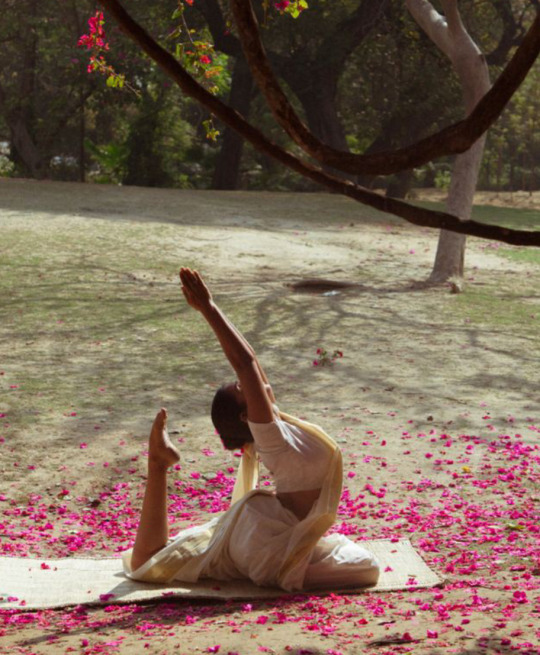
Popular Yoga Asanas:
1. Downward-Facing Dog (Adho Mukha Svanasana)
2. Warrior Pose (Virabhadrasana)
3. Triangle Pose (Trikonasana)
4. Seated Forward Fold (Paschimottanasana)
5. Tree Pose (Vrksasana)
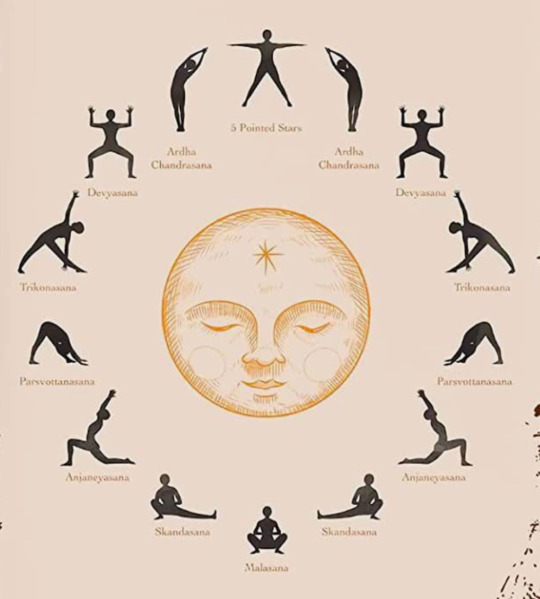
#InternationalYogaDay#YogaForAll#desiblr#desi tumblr#desi girl#being desi#desi tag#desi aesthetic#yoga#indian culture#health and wellness#desi#international yoga day#hinduism#hindublr
45 notes
·
View notes
Text
A Short Introduction to the Yoga Sutras
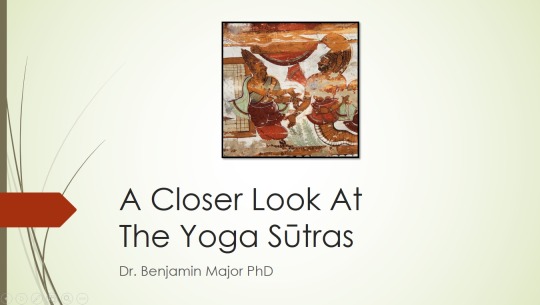
The Yoga Sutras are generally considered a foundational text of the yoga tradition. In this article we examine the context and background of the text, briefly explore its structure and content, and I also offer some reflections on the text’s relevance in modern times.
Note: I have decided not to use diacritics in this article. Diacritics are those little lines and dots above and below letters that tell you how to pronounce Sanskrit words. Normally I use diacritics in my writing, as they are essential for pronouncing Sanskrit correctly. However as this article is meant for non-scholars I have decided it would be better to try and write the Sanskrit words in a way that will make them easy to read and pronounce, so as not to put anybody off!
History & Context
Most scholars these days date the Yoga Sutras to somewhere between the 2nd and 5th centuries CE, with Philipp Maas placing it in the early 5th century.
The text is attributed to a sage named Patanjali. Biographically, we know next to nothing about Patanjali. The name is a compound word formed from the Sanskrit words pata (falling, flying) and anjali (the gesture of joining the hands together in reverence).
Yoga had already been around in some form or another for many centuries by this point. Therefore, Patanjali did not ‘invent’ Yoga. Nevertheless, this is the earliest comprehensive and systematic text on the subject that has survived.
Yoga was just one darshana or school out of many in ancient India. In terms of philosophy, it shares many similarities with the Samkhya school. But whereas Samkhya tends to emphasise the use of reason and knowledge to gain liberation, Yoga emphasises practical and experiential methods.
Philosophically, both the Samkhya and Yoga schools teach a form of dualism. This is a dualism between purusha (our true Self) and prakriti (everything else, including the body and mind) and the whole point of Samkhya and Yoga in a nutshell is to guide us towards the realisation of purusha, that is, our true Self. This is true liberation or moksha in Yoga.
Most of the ancient darshanas had their own sutra text. Sutra texts are known for their brevity. Basically, sutra texts are where the most essential teachings of a school are distilled into as few words as possible. Knowledge systems were handed down orally in ancient India and thus source material was kept minimal with a view to facilitating memorisation.
Other authors would then come along and write longer commentaries on these sutra texts. The Yoga Sutras have a rich commentarial tradition spanning many centuries. The first and most well known is the bhasya commentary by a certain Vyasa. Vyasa actually means something like ‘compiler’ or ‘editor’ so that probably wasn’t his actual name!
Some scholars even argue that Patanjali and Vyasa are actually one and the same person, though others would strongly disagree with this thesis. Either way, this commentary is indispensable when it comes to making sense of the sutras, and published versions of the Yoga Sutras tend to include the bhasya commentary or at least reference it.
As a final note, many scholars now use the term pātañjalayogaśāstra to refer to this text as a whole (sutras plus commentary), because that is the name our oldest existing manuscripts use. But to keep things simple we will continue to use the name Yoga Sutras!
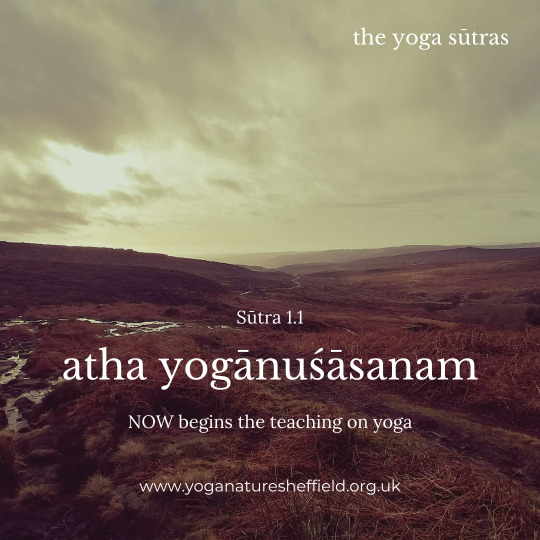
Structure of the Text
The Yoga Sutras are divided into the following four padas or chapters:
Samadhi Pada: This is where Patanjali defines Yoga and then describes the nature and the means to samadhi, the goal of Yoga.
Sadhana Pada: Sadhana is the Sanskrit word for practice or discipline. Here the author outlines two forms of Yoga, the kriya yoga (yoga of action) and the ashtanga yoga (the yoga of eight auxiliaries or limbs). This is also where Patanjali discusses the kleshas, five ‘afflictions’ or impediments to Yoga.
Vibhuti Pada: Vibhuti is the Sanskrit word for power or manifestation. Supra-normal powers (siddhis) are said to be acquired by the practice of Yoga. However, the temptation of these powers should be avoided and the attention should ultimately be fixed only on liberation.
Kaivalya Pada: Kaivalya literally means isolation. This is the chapter on final liberation. The Kaivalya Pada describes the process of liberation, it explains how the mind is constructed and veils the inner light of the Self.
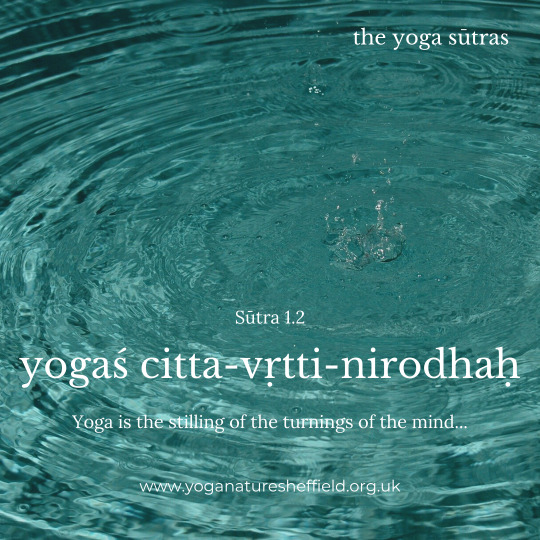
The Goal of Yoga
Not one for a lengthy preamble, Patanjali gets stuck right in there and clearly states the goal of Yoga in the well-known second sutra:
yogas chitta-vritti-nirodhah YS 1.2
Any Sanskrit sentence allows for a number of possible translations and this one is no different. A nice and accurate one is this one from Barbara Stoler Miller:
Yoga is the cessation of the turnings of thought
The reason I say this one is accurate is because a literal meaning of vritti is ‘turning’. Ever felt that thoughts are ‘going round and round’ in your head? Well this phrase nicely captures that! The vrittis in this statement refer to thoughts, emotions, ideas and basically any cognitive act of the mind. Patanjali lists five types of vrittis. These are, once translated:
Right knowledge
Error or false knowledge
Imagination
Sleep &
Memory
All such activities of the mind are products of prakriti and are completely distinct from the true Self, purusha, that pure awareness or consciousness which we are aiming to enter into through Yoga. The means prescribed by Patanjali in the first chapter of the Yoga Sutras to still the vritti states of mind are sustained practice (abhyasa) and dispassion (vairagya).
Specifically the practice offered is meditation, or keeping the mind fixed on any particular object of choice without distraction. Patanjali then describes a number of possible forms such meditation could take. By stilling all thought, meditation removes all objects of awareness. Awareness can therefore now be aware only of itself, of its own source, the true Self or purusha. This state is known as samadhi in Yoga and Patanjali makes it super clear that this state of samadhi is the goal of Yoga and thus the whole text is focused upon achievement of that goal.
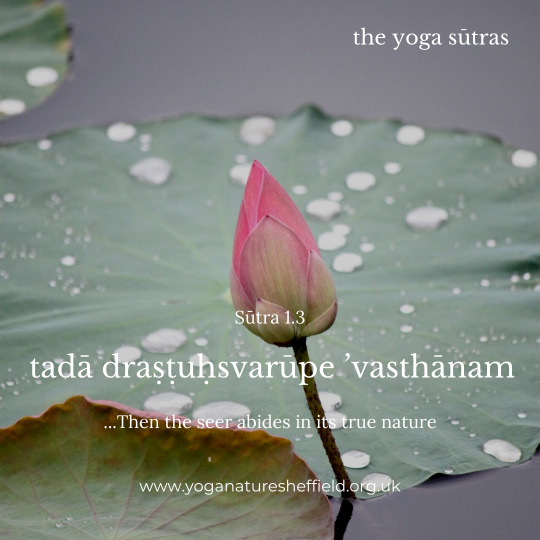
Obstacles to Yoga
Patanjali mentions five kleshas, which can be translated as impediments or obstacles to achieving samadhi and thus Yoga. These five are as follows:
Ignorance
Ego
Desire
Aversion
Clinging
In the Yoga Sutras, and indeed in ancient Indian philosophy in general, the first item in any list is the most important and fundamental. It’s the same here. Ignorance here means failing to recognise our true Self or purusha and instead identifying ourselves with our body, mind and the material world. All of the other obstacles arise from this fundamental error.
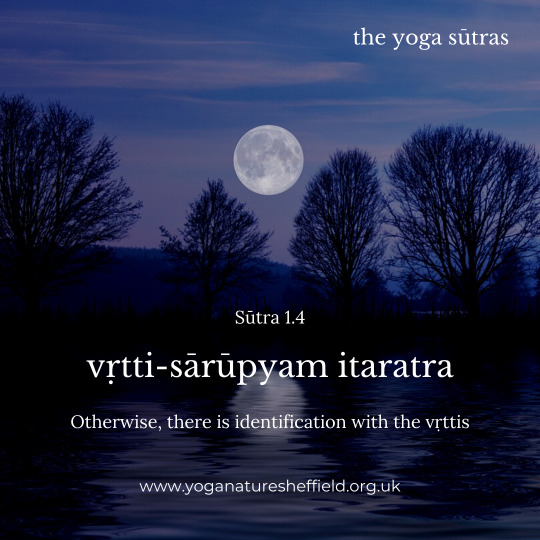
Yoga Psychology
Like most other schools of Indian thought, the Yoga school believed in the related concepts of karma and rebirth. According to this doctrine, we are caught in an endless cycle of rebirths called samsara and the purpose of following a path such as Jainism, Buddhism or Yoga is to bring an end to this cycle. Where the Yoga Sutras really shine are in interpreting this doctrine in a highly sophisticated ‘psychological’ way, to use modern terminology.
According to this Yoga psychology, the mind forms an impression of an object through the sense organs, which is called a pratyaya. Once this pratyaya or active image of this object is no longer of active interest to the mind, it becomes an inactive or latent samskara. A samskara is an imprint left in the chitta, somewhat like a sound is imprinted on a tape recorder, or an image on photographic film. In this way the vrittis, the activities of the mind, are retained as samskaras when they fade.
It is important to note that these samskaras are not just passive imprints but vibrant latent impulses that can get activated under conducive circumstances and can exert influence on a person’s thoughts and behaviours, even many years after the impression was made. What’s more, according to Yoga these samskaras can persist from previous lives. The chitta is thus something of a storehouse of these recorded samskaras, deposited and accumulated there over countless lifetimes. One is here reminded of the theory of the subconscious in modern psychoanalysis.
According to Yoga, karma is generated by the vrittis, and the vrittis, in turn, are produced by the kleshas. There is thus a vicious cycle of kleshas, vrittis and samskaras. To run through the whole cycle again to try and make it as clear as possible: vrittis are recorded in the chitta as samskaras, and these samskaras eventually activate consciously or subliminally, producing further vrittis. These vrittis then provoke actions and reactions, which in turn are recorded as samskaras, and the cycle continues endlessly, leading to much suffering along the way.
The whole Yoga project aims to bring this vicious cycle to an end and it is liberation from this mind created suffering that we are after as yogis. The Yoga Sutras are effectively a manual guiding us towards this end, this state of samadhi or complete meditative consciousness.

The Yamas and Niyamas
The second pada or chapter of the Yoga Sutras contains a famous exposition of five ethical restraints (yamas) and five ethical observances (niyamas) and these are relatively well-known in the modern yoga world. The first thing to get clear is that these yamas and niyamas are NOT original or unique to Yoga. All ascetic schools in ancient India had these ethical codes, and the exact same ones appear in Jainism for example. Sometimes, you even get more of them. Some yoga texts for instance list 10 yamas and 10 niyamas.
The five yamas listed in the Yoga Sutras are:
Ahimsa (non-harming) Satya (truth telling) Asteya (non-stealing) Brahmacharya (chastity or celibacy) Aparigraha (non-acquisitiveness)
The five niyamas are:
Shauca (purity or cleanliness) Santosha (contentment) Tapas (self-discipline) Svadhyaya (study) Ishvarapranidhana (devotion to the Ishvara or Lord)
Many of these could do with further explanation and commentary but there is not space in this present article. The other thing I want to stress is that these yamas and niyamas were not seen as optional extras for yogis. Rather, these were the bedrock of fruitful yoga practice. Patanjali and others refer to them as the mahavratam or ‘great vow’. Importantly, having listed the yamas, Patanjali devotes an entire sutra to reiterating just how central and non-negotiable these yamas are. Once translated, this sutra reads as follows:
[These yamas] are considered the great vow. They are not exempted by one’s class, place, time or circumstance. They are universal. YS 2.31
So, regardless of your social status, regardless of where you live, in which time period you live, and any other extenuating circumstances (such as your career), adherence to the yamas, including especially ahimsa, the foundation of them all, is an essential part of being a yogi as defined by Patanjali’s system.
Vyasa is even more emphatic in his bhasya commentary to the Yoga Sutras, and it is here that the link between ahimsa and vegetarianism is explicitly and unequivocally made, and several examples are brought to bear. Refer to the work of scholar Jonathan Dickstein to read more about the strong case for vegetarianism made in Patanjali Yoga.
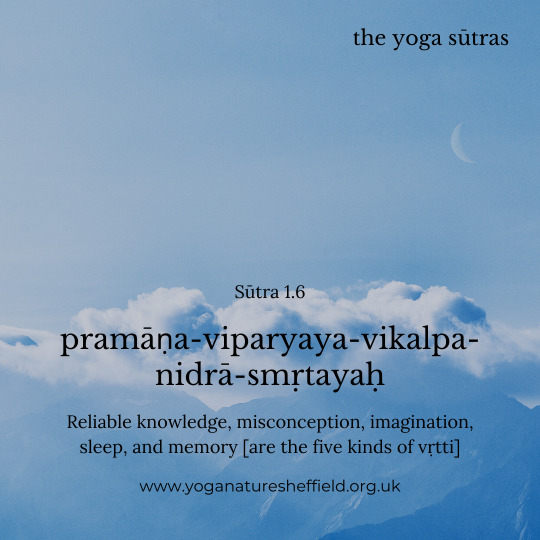
The Ashtanga Yoga
These yamas and niyamas are just the first two parts of Patanjali’s famous ashtanga or eight-part path. I would first like to clarify that this systematisation of yoga into a series of angas (a word translated by some modern scholars as ‘auxiliaries’ but more commonly rendered as ‘limbs’) was again not novel to Patanjali. Throughout the yoga tradition we find various similar schemes, predating and postdating Patanjali, including fourfold, fivefold, sevenfold and even fifteenfold schemes. I would also like to stress that, despite sharing the same name, this ashtanga yoga bears little relation to the modern postural form of yoga known as Ashtanga.
Following the yamas and niyamas then, we then have the following six angas:
Asana (posture): At last I hear you cry, postures! In Patanjali’s day meaning a steady and comfortable seated posture, asanas today comprise a set of physical exercises which stretch and strengthen the body. It is this aspect of yoga that has been most visibly exported to the West but too often stripped from its context as just one ingredient in a more ambitious and far-reaching sequence.
Pranayama (breath control): Prana refers to the universal life force whilst ayama means to regulate or control, but it can also mean to expand and lengthen. Prana is the vital energy needed by our physical and subtle layers, without which the body would perish. It is what keeps us alive. Pranayama is thus the control or expansion of prana through the breath, depending on which definition of ayama you use.
Pratyahara (withdrawal of the senses): This limb further deepens the above process by removing consciousness from all engagement with the senses (sight, sound, taste, smell and touch) and sense objects.
This is followed by the final three limbs collectively known as samyama: Dharana (concentration, fixation), Dhyana (meditation), and finally Samadhi (the latter of which Patanjali further divides into seven rather esoteric stages). These last three limbs are essentially different degrees of concentrative intensity and culminate in the realisation by the Self of its own nature.
Just to reiterate one more time, it is this Self-realisation, the state known as samadhi, that is the true goal of Yoga.
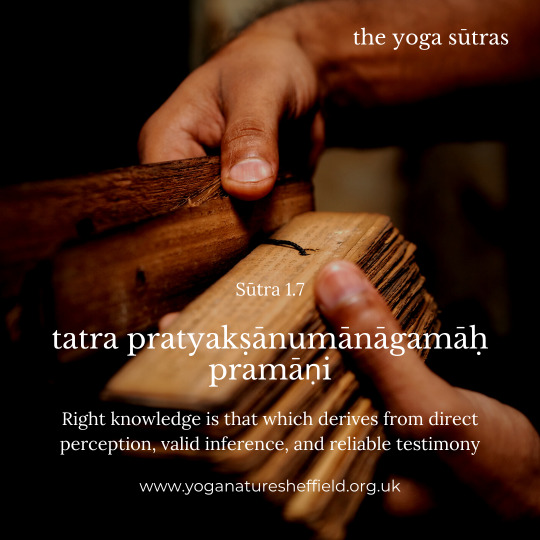
Relevance of the Yoga Sutras for Today
In this brief introduction we have of course only scratched the surface of this incredible text, and there is much more that could be said. But for now I want to end with some concluding reflections on the continuing relevance of the Yoga Sutras in the modern world.
One question that arises is whether Patanjali was prescribing a strictly ascetic path. And indeed, the general scholarly consensus has usually been to associate Patanjali's Yoga exclusively with extreme asceticism, mortification, denial and renunciation. However, there are dissenting vocies. For example, Ian Whicher has repeatedly and passionately argued that Patanjali's Yoga can be seen as enabling a more responsible living in and engagement with the world, and that Patanjali was not advocating total renunciation. For Whicher, following the path of Patanjali can lead one towards that integrated and embodied state of liberated selfhood whilst living, a state known as jivanmukti.
Regardless of whether Patanjali was historically preaching ascetism or not, the fact remains that the Yoga Sutras are full of valuable ideals and tools for the practitioner living in the modern world. Let’s face it though, this is a challenging path. As a scholar and practitioner I often perceive a huge disconnect between the kind of yoga I am seeing on the likes of Instagram and the teachings of the Yoga school as presented in the Yoga Sutras. After, all, the former is highly focused on body image, whereas the Yoga of Patanjali is all about dissociating ourselves from our body and mind and recognising our true Self. However, this does not mean that the two are necessarily irreconcilable.
Though there is absolutely no historical evidence that Patanjali and his followers were practicing postural yoga (that didn’t come until later with the emergence of the Hatha tradition) nowhere in the Yoga Sutras does it say that physical exercise cannot be part of one’s yoga practice. We just have to remember that as far as Patanjalian Yoga is concerned, such postural activity is just a further means or method on the path towards samadhi or full meditative awareness. This is why any so-called yoga that does not contain more internalised meditational practices but which focuses solely on physical exercise should not really be called yoga.
The Yoga Sutras remains undoubtedly the most famous ancient yoga text, and it is studied to some extent in probably every yoga teacher training course. To be honest, I personally feel that too much emphasis is placed on the Yoga Sutras, at the expense of other branches and other texts of the tradition. The Tantric texts, in particular, are still sorely neglected. One of my own aims in my work is to try and decentre the Yoga Sutras and provide a much wider overview of the history and philosophy of yoga and the other related schools of ancient India. This is not to take anything away from the Yoga Sutras, however, as it is without doubt an extraordinary text that continues to be highly relevant in the 21st century.
Further Reading
I have already mentioned some scholars whose work you may wish to refer to, such as Philipp André Maas, Ian Whicher and Barbara Stoler Miller. For a translation and commentary on the Yoga Sutras that is both scholarly accurate and reasonably accessible I would recommend that of Edwin Bryant published by North Point Press.
11 notes
·
View notes
Text
Importance of yoga in our life

Yoga is an Indian spiritual and physical practice or discipline that dates back to prehistoric times. Contrary to what some people may think, yoga is not just about exercise with the primary goal of improving health and well-being, but it is also about self-actualization.
The importance of yoga in our lives cannot be underestimated. It is a science that focuses on improving not only physical health but also mental and spiritual well-being, which are the basis of our life.
You will be surprised to know how many health benefits yoga provides. From relieving stress and weight management to improving your overall health, this ancient practice can help you live a perfect life.
A brief look at yoga:- Yoga is an ancient art that has helped millions of people around the world achieve better physical and mental health.
Nowadays everyone uses it, especially those who suffer from stress and back pain. Yoga is generally considered to be related to physical exercise, but yoga is not just exercise. Yoga also strengthens and heals a person's mind and leads him to live a better life. The best yoga websites will guide you through the right poses for your body, helping you improve your health in ways you never imagined before.
The yoga trend is increasing all over the world. One of the main reasons for its popularity is that even doctors recommend yoga to their patients. Yoga is being widely studied by scientists and has been shown to calm and relax both the mind and body and uplift the spirit. This is an extraordinary discipline to have a good mind and stay healthy.
Importance of yoga mental benefits:- Apart from the physical benefits, one of the best benefits of yoga is how it helps a person manage mental health. Most importantly, yoga helps deal with stress, which has devastating effects on the body and mind. According to Dr. Nevins, "Stress can manifest itself in a variety of ways, including back or neck pain, sleep problems, headaches, drug abuse, and inability to concentrate." Yoga can be very effective in developing coping skills. This practice helps people achieve a more positive outlook on their lives.
Iincreased concentration:- Better concentration is one of the many benefits of a calm mind. People who have survived modern life know the importance of concentration as they are often busy with multiple tasks. Meditation is a powerful practice for sharpening concentration. In meditation, whenever your mind wanders, you direct your attention to your breath, a mantra, or an image.
Strength and flexibility:- A sedentary lifestyle causes many physical health problems, such as limited flexibility, low strength, poor posture, stiffness, and much more. Performing yoga asanas encourages movement of the body in different directions, helps to open up which reduces stiffness, increases joint mobility and releases repressed emotions which leads to strength and flexibility.
Increased strength and flexibility are important for healthy maintenance of muscles, tissues and ligaments.
Discipline and caution in life. By applying the Yamas and Niyamas written in the Yoga Sutras of Patanjali, you invite greater discipline and mindfulness into your life. The five Yamas and Niyamas are moral rules for living a virtuous life.
Respecting this ethic throughout life means being conscious in every action, acting with compassion and living in the present moment.
Final word:- Yoga is rightly called "the science of living in harmony with oneself and the world": it not only helps keep our body in shape but also helps keep our mind and soul active. This practice combines body, mind and spirit and allows us to be happy, peaceful and content by changing our attitude, behavior and approach towards life. It makes us more positive, optimistic and happy.
Yoga is very important to people and can also have a positive impact on the world. At PIES, we are focused on making sure you have the best yoga experience in Northern Virginia. Our studio in Alexandria, Virginia has a variety of yoga programs and classes for beginners and seniors. Call us at 703-940-1948 to schedule your class.
#yoga#yoga pose#yoga inspiration#yoga daily#girls in yoga pants#fitness#wellness#pilates#exercise#health and fitness#health care#healthylifestyle#mental health#healthcare#health & fitness#doctors#health and wellness#public health#medicine
7 notes
·
View notes
Text
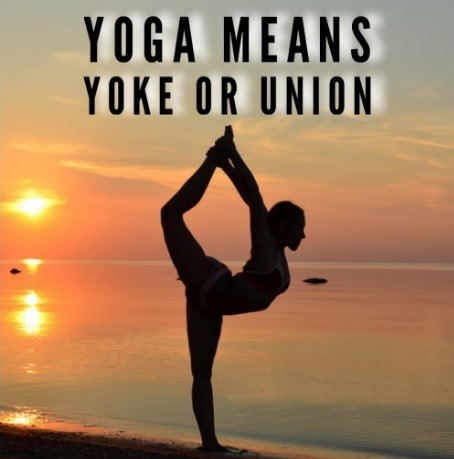
“It’s funny as an Indian, former Hindu to see people especially from the West lecturing on yoga, when they don’t understand that India is known as the yoga capital of the world. You can’t change the purpose of doing yoga according to how you feel.
When we talk on modern yoga we are talking about the different asanas (Hatha yoga particularly). The place to learn whether or not yoga is anyway connected with Hinduism is to open the very Hindu scriptures like the Shiva Samhita, Yoga sutras of Patanjali, Gheranda Samhita and Hath yoga pradipika. Other than that one can read the book called “Light on Yoga” written by BKS Iyengar who was student of Krishnamachraya (father of modern yoga).
You will see in these books how deeply yoga is connected with Hinduism. Some of the book opens by taking the name of Adinath (Siva’s other name).
These people would laugh so hard if they would hear Westerners claiming yoga is not Hinduism. I mean c’mon we grow up learning from childhood.”
Sandeep “ The Ex Hindu Brahmin”.
6 notes
·
View notes
Text
Beginner yoga poses for flexibility and strength Embracing Ethical Principles and Inner Peace
Beginner Yoga, Poses For Flexibility And Strength a practice rooted in historical traditions, has advanced into a globally recognized discipline that encompasses physical, mental, and religious dimensions. Its origins trace lower back to historical India, in which it become developed as a comprehensive system for achieving balance, self-recognition, and holistic well-being. Today, yoga is practiced global, transcending cultural and geographical limitations. It offers a path to personal boom, fitness, and internal peace, integrating bodily postures, breath control, meditation, and ethical principles.

The Origins and Evolution of Yoga
The records of Yoga For Seniors dates returned lots of years, with its earliest mentions observed within the Vedic texts of historic India. The term “yoga” is derived from the Sanskrit word “yuj,” that means “to yoke” or “to unite,” signifying the union of the character self with the general attention. The historical practice become first of all a religious and philosophical pursuit geared toward accomplishing enlightenment and liberation from the cycle of delivery and rebirth.
Over the centuries, yoga for teens evolved thru numerous colleges of notion, which includes the classical Yoga of Patanjali, which is distinctive in the "Yoga Sutras." Patanjali’s machine emphasised the 8 limbs of yoga, which encompass moral hints (Yamas and Niyamas), physical postures (Asanas), breath manage (Pranayama), sensory withdrawal (Pratyahara), attention (Dharana), meditation (Dhyana), and ultimate absorption (Samadhi). This complete framework aimed to manual practitioners towards religious awakening and self-cognizance.
The Physical Practice: Asanas
One of the maximum recognizable elements of yoga in modern practice is Asanas, or bodily postures. These poses are designed to decorate physical flexibility, electricity, and stability while promoting standard fitness and well-being. The exercise of Asanas additionally facilitates to boom body recognition, coordination, and alignment.
The sort of yoga postures levels from simple stretches to complicated poses that require substantial energy and versatility. Common poses encompass the downward-facing dog (Adho Mukha Svanasana), warrior poses (Virabhadrasana), and tree pose (Vrksasana). Each posture has precise benefits and may be modified to deal with distinct ability stages and physical situations.
Beyond their bodily blessings, Asanas also are used to prepare the body and thoughts for deeper practices which include meditation. The subject of retaining those postures enhances mental attention and fosters a sense of inner calm.
Breath Control: Pranayama
Breath manipulate, or Pranayama, is any other necessary component of yoga. The time period "Pranayama" combines “Prana,” which means life pressure or breath, and “Yama,” meaning control. Pranayama includes diverse strategies for regulating and harnessing the breath to decorate power drift, enhance mental readability, and guide bodily fitness.
Techniques along with Ujjayi (victorious breath), Kapalabhati (skull-shining breath), and Nadi Shodhana (exchange nose respiration) each serve wonderful functions. Ujjayi breath, characterized with the aid of a mild constriction in the back of the throat, enables to calm the thoughts and preserve attention in the course of practice. Kapalabhati includes rapid, forceful exhalations accompanied by passive inhalations, which invigorates the thoughts and cleanses the breathing machine. Nadi Shodhana balances the left and proper hemispheres of the mind, promoting emotional stability and mental equilibrium.
Meditation and Mindfulness
Meditation, or Dhyana, is a valuable aspect of yoga that entails cultivating intellectual stillness and attention. The exercise of meditation facilitates to quiet the thoughts, lessen stress, and foster a deeper connection with one’s inner self. Through centered attention and mindfulness, practitioners learn how to observe their thoughts and feelings without attachment or judgment.
Various meditation strategies are employed in yoga, which include awareness on a mantra, visualization, or guided imagery. The intention of meditation is to reap a country of internal peace and clarity, transcending the distractions and conflicts of daily existence. Regular meditation exercise can result in improved emotional resilience, extended self-cognizance, and a greater sense of purpose and achievement.
The Ethical Dimensions: Yamas and Niyamas
Yoga isn't always entirely approximately physical postures and breath manage; it also encompasses moral hints that form a practitioner’s conduct and interactions with others. These hints are referred to as the Yamas and Niyamas, forming the first two limbs of Patanjali’s eightfold course.
The Yamas are ethical standards that deal with one’s relationship with the outside international. They include:
Ahimsa (Non-violence): Advocating kindness and compassion toward oneself and others.
Satya (Truthfulness): Encouraging honesty and integrity in thought, speech, and action.
Asteya (Non-stealing): Promoting respect for others’ possessions and thoughts.
Brahmacharya (Moderation): Encouraging stability and strength of mind, specially in relation to dreams and strength.
Aparigraha (Non-possessiveness): Fostering non-attachment and contentment with what one has.
The Niyamas are non-public observances that manual one’s internal behavior. They include:
Saucha (Purity):
Emphasizing cleanliness of frame and thoughts.
Santosha (Contentment):
Cultivating gratitude and attractiveness.
Tapas (Discipline):
Encouraging strength of will and perseverance.
Svadhyaya (Self-examine)
Promoting self-mirrored image and gaining knowledge of.
Ishvara Pranidhana (Surrender to a better energy)
Encouraging devotion and trust in a extra force or time-honored precept.
The Holistic Approach to Well-being
Yoga’s routines for improving posture and alignment holistic method encompasses now not simplest the bodily and mental elements however also the spiritual dimension. It fosters a experience of unity and harmony inside oneself and with the broader world. The practice of yoga encourages people to discover their internal selves, cultivate mindfulness, and increase a deeper connection with their environment.

Incorporating yoga into each day existence can result in advanced physical fitness, reduced strain, and a extra sense of inner peace. It gives gear for coping with life’s demanding situations, fostering resilience, and improving ordinary great of existence. Whether practiced in a studio, at domestic, or in nature, yoga gives a sanctuary for self-discovery and private boom.
#Yoga’s routines for improving posture and alignment#Yoga For Seniors#yoga for teens#Poses For Flexibility And Strength
2 notes
·
View notes
Text
Patanjali says be non-attached. That means be flowing, accepting, whatsoever life brings. Don't demand and don't force. Life is not going to follow you.
You cannot force life to be according to you. It is better to flow with the river rather than pushing it. Just flow with it! Much happiness becomes possible. There is already much happiness all around you, but you cannot see it because of your wrong fixations.
But this non-attachment in the beginning will only be a seed. In the end, non-attachment becomes desirelessness. In the beginning non-attachment means non-fixation; in the end non-attachment will mean desirelessness, no desire. In the beginning: no demand; in the end no desire.
But if you want to reach to this end of no-desire, start from no-demand. Even for twenty-four hours try Patanjali's formula. Just for twenty-four hours, flowing with life not demanding anything. Whatsoever life gives, feeling grateful, thankful... Just moving for twenty-four hours in a prayerful state of mind - not asking, not demanding, not expecting - and you will have a new opening. Those twenty-four hours will become a new window. And you will feel how ecstatic you can become.
But you will have to be alert in the beginning. It cannot be expected that non-attachment, for the seeker can be a spontaneous act.
OSHO
Yoga: The Alpha and the Omega, Volume 1 Discourses on the Yoga Sutras of Patanjali
3 notes
·
View notes
Text
sutras
By Rachel Shannon
Every major religion in the world has one book or text that followers of that religion consider holy, for yoga it’s the sutras. They are collections attributed to a sage named Patanjali. The sutras come from Patanjali’s students who were loyal followers and wrote them down, which are read and studied to this day. There are a total of 200 sutras. Only a handful mention the physical asanas that most western practitioners are familiar with.
Most people in the western part of the world associate yoga with the physical, however the original practitioners were really interested in spiritual enlightenment. Meditation was most important. The aim of yoga to them was a spiritual journey and how to solve obstacles along the way. I think people in the western part of the world have lost their way when it comes to yoga. They have lost the true meaning. I think it’s like with any religion, certain themes get misconstrued and misinterpreted.
2 notes
·
View notes
Text
What is Yoga?
By Lauren Tober | May 9, 2019 | Yoga + Meditation
When I tell people I teach iRest Meditation, they often ask me if I teach yoga as well.
The answer is YES! iRest Meditation IS yoga.
But I understand the confusion. While yoga is an ancient contemplative practice, it’s also a multi-million dollar industry that largely promotes advanced physical postures and a skinny body as the ultimate goal of yoga. But yoga is more than just downward dogs and sun salutations.
Commentaries of the meaning of the word yoga vary from union, to attaining what was previously unattainable, to directing all our focus on the activity in which we’re engaged, to being one with the divine.¹

Patañjali’s Yoga Sūtras
The meaning of yoga is presented concisely in the Patañjali’s Yoga Sūtras, a text that is considered by many to be the heart of yoga.¹
While little is known about Patañjali, it is widely accepted that he was an authority on yoga, and complied and systemised the vedic knowledge of the time into sūtras that could be handed down orally from teacher to student, in a concise way that would make it possible to remember. It is estimated that Patañjali wrote the sūtras around the second century C.E. and that Vyāsa wrote the original commentary on the sūtras, Yoga-Bhâshya, around the fifth century C.E.²
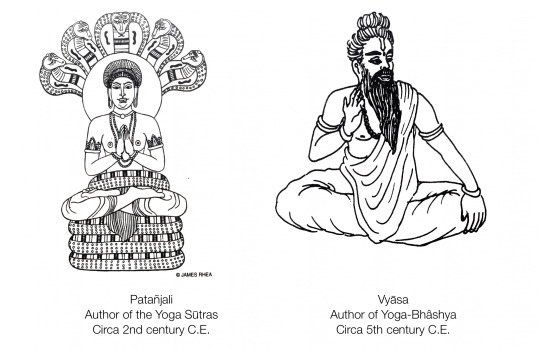
Yogaś Citta Vṛtti Nirodhaḥ
Patanjali’s answer to this question ‘what is yoga?’, is in chapter one, verse two of the Yoga Sūtras:
yogaś citta vṛtti nirodhaḥ (I.2)
Different commentators have interpreted this sutra in subtly different ways.
T.K.V. Desikachar wrote:
“Yoga is the ability to direct the mind exclusively toward an object and sustain that direction without any distractions.”⁴
B.K.S. Iyengar wrote:
“Yoga is the cessation of movements in the consciousness.”⁵
Edwin F. Bryant wrote:
“Yoga is the stilling of the changing states of mind.”⁶
Georg Feuerstein wrote:
“Yoga is the restriction of the whirls of consciousness.”⁷
Judith Hanson Laster wrote:
“Yoga is the state in which the agitations of consciousness are resolved.”⁸
Richard Miller wrote:
“Yoga is when we knowingly live as the realization of unconditioned Stillness, whether thought is in movement or stillness.”⁹
However you interpret this most influential sūtra about the meaning of yoga, it’s clear that the yoga is related to understanding the mind, and has nothing at all to do with having a slim and flexible body that looks sexy in expensive lycra leggings.
REFERENCES
Desikachar, T.K.V. (1995). The Heart of Yoga. Rochester, Vermont, US: Inner Traditions International.
Feuerstein, Georg. (2002). The Yoga Tradition. Delhi, India: Bhavana Books and Prints.
Feuerstein, Georg. (2002). The Yoga Tradition. Delhi, India: Bhavana Books and Prints (p.311)
Desikachar, T.K.V. (1995). The Heart of Yoga. Rochester, Vermont, US: Inner Traditions International (p.149).
Iyengar, B.K.S. (2002). Light on the Yoga Sūtras of Patañjali. London, UK: Thorsons (p.50).
Bryant, Edward. (2009). The Yoga Sūtras of Patañjali. New York, US: North Point Press (p.10).
Feuerstein, Georg. (2002). The Yoga Tradition. Delhi, India: Bhavana Books and Prints (p. 286).
Lasater, Judith Hanson. (2014). The Ten Most Important Sutras.
Miller, Richard. (2013). Level 1 Training Integrative Restoration (version 4.6c). San Rafael, CA, US: Anahata Press (p. xxiii).
#yoga#lord shiva#yoga citta#asana#kundalini#hatha#ashtangavinyasa#mind over matter#patanjali#ilyengar#vyasadeva#yogeshwar
4 notes
·
View notes
Text
Vairagya and Abhyasa – How to Deal with the Stormy Mind
Sutras 12 through 16 of Book One of the Yoga Sutras of Patanjali
Yoga Sutras 1:12. Their suppression [is brought about] by persistent practice [abhyasa] and non-attachment [vairagya].
Two things are needed for the ending of mental modifications. One is abhyasa–sustained spiritual practice. This is why Krishna speaks of abhyasa yoga. The other is purely psychological: vairagya. A Brief Sanskrit Glossary defines vairagya as:“Non-attachment; detachment; dispassion; absence of desire; disinterest; or indifference. Indifference towards and disgust for all worldly things and enjoyments.”
What is “Practice” (Abhyasa)?
13. Abhyasa is the effort for being firmly established in that state [of chitta-vritti-nirodha].
Jnaneshvara Bharati expands on this, saying: “Abhyasa means choosing, applying the effort, and doing those actions that bring a stable and tranquil state.” Shankara simply says that abhyasa consists of the observance of yama and niyama, which are to be discussed later on.
14. It [abhyasa] becomes firmly grounded on being continued for a long time, without interruption and with reverent devotion.
Vyasa: “Carried through with austerity, with brahmacharya, with knowledge and with faith, in reverence it becomes firmly grounded.”
Shankara: “Unless it is for a long time, and unless it is uninterrupted, the practice does not become firmly grounded.”
What is “non-attachment” (Vairagya)?
15. The consciousness of perfect mastery [of desires] in the case of one who has ceased to crave for objects, seen or unseen, is Vairagya.
Sri Ramakrishna said: “A certain woman said to her husband: ‘So-and-so has developed a spirit of great dispassion for the world, but I don’t see anything of the sort in you. He has sixteen wives. He is giving them up one by one.’ The husband, with a towel on his shoulder, was going to the lake for his bath. He said to his wife: ‘You are crazy! He won’t be able to give up the world. Is it ever possible to renounce bit by bit? I can renounce. Look! Here I go.’ He didn’t stop even to settle his household affairs. He left home just as he was, the towel on his shoulder, and went away. That is intense renunciation.
Ramakrishna on Vairagya
“There is another kind of renunciation, called ‘markata vairagya,’ ‘monkey renunciation.’ A man, harrowed by distress at home, puts on an ochre robe and goes away to Benares. For many days he does not send home any news of himself. Then he writes to his people: ‘Don’t be worried about me. I have got a job here.”
Vairagya is not an on-and-off matter, but a permanent cessation of any desire for any object whatsoever. Vyasa says that one with true vairagya “is inwardly aware of the defects in objects by the power of his meditation.”
16. That is the highest Vairagya in which, on account of the awareness of the Purusha, there is cessation of the least desire for the Gunas.
The preceding sutra was about vairagya in relation to objects. This goes further and speaks of dispassion-desirelessness is relation to the three modes of Prakriti, the gunas. These are discussed at length in the Bhagavad Gita, but simply put they are the three modes of energy behavior–qualities of energy. A Brief Sanskrit Glossary defines guna as: “Quality, attribute, or characteristic arising from nature (Prakriti) itself; a mode of energy behavior.
As a rule, when “guna” is used it is in reference to the three qualities of Prakriti, the three modes of energy behavior that are the basic qualities of nature, and which determine the inherent characteristics of all created things. They are:
sattwa–purity, light, harmony;
rajas–activity, passion; and
tamas–dullness, inertia, and ignorance.”
There can be attachment to the qualities of subtlety, intelligence, and purity (sattwa), of effectiveness and efficiency and mastery (rajas), and stability and steadiness (tamas). But these, too, are illusory like other objects.
However such vairagya does not come from insight into the nature of objects or gunas but from knowing the Self. Only when we enter fully into the Self will all desire of any kind cease. For that reason Self-knowledge or atma-jnana should be our aim at all times, for that alone will eliminate all that stands between us and perfect freedom (moksha or jivanmukti).
***This article is an excerpt from Swami Nirmalananda’s commentary on Patanjali’s Yoga Sutras Yoga: Science of the Absolute
13 notes
·
View notes
Text
youtube
The Yoga Sutras, Nature of Yoga, Types of Mental States. The Yoga Sutras of Patanjali
#yoga sutras of patanjali#patanjali yoga sutras art of living#patanjali yoga sutras#yoga sutras#patanjali yoga sutra#the yoga sutras of patanjali#yoga sutras of patanjali chapter 1#patanjali yoga sutras explained#patanjali#patanjali yoga sutras english meaning#patanjali yoga sutras audiobook#patanjali yoga sutras with meaning#yoga sutras by patanjali#patanjali yoga sutras chanting#patanjali yoga sutras sadhguru#patanjali yoga sutras full chant#Youtube
0 notes
Text

Samādhi - Supreme Consciousness
Samādhi is the highest state of consciousness that a human can reach in life. It is the goal of our spiritual journey on earth.
Samādhi is the blissful return to our Divine origin. When the thousand-petalled Lotus of the Sahasrāra Chakra opens and the Jīvātmā dissolves within it, the goal of its long, experience-rich journey is reached, and its lifelong thirst for the “nectar of immortality” (Amrita) is quenched. AMARA TATTVA (or ĀDI TATTVA) is the element of the Sahasrāra Chakra that transforms our consciousness immediately into SAT CHIT ĀNANDA, the eternally true existence and eternally blissful consciousness, when we come into contact with it.
How can one describe the consciousness of Samādhi?
There is no longer any individuality. Consciousness and self-awareness continue to exist, but not in the previous duality of “that is mine” and “that is yours”. The person lives on, but from now on the inner Self remains with the Supreme Self. This means the end of all problems and pain, the end of suffering, of rebirth and death. The liberated one lives on the earth in eternal happiness and joy, and when the body is renounced the consciousness dissolves completely in the Divine Self.
As mentioned before, there are several levels of consciousness – deep sleep, dream consciousness, waking consciousness, supreme consciousness and cosmic consciousness.
At the lower end of the scale in deep sleep, we experience a state of mental unconsciousness. The mind is free from restlessness and worries and we enjoy a deep, unspoilt rest and relaxation. But when we awaken everything is as before. The thoughts and worries return, our situation and ourselves have not changed in the least.
On the second last rung of the ladder of consciousness we enter into the highest level of consciousness – Samādhi. Outwardly one is unable to determine whether someone is in Samādhi. An observer could think that the person was in meditation, asleep or even unconscious. As in sleep, physical sensations such as heat, cold, hunger, thirst, etc., are strongly diminished in Samādhi. The state of Samādhi, however, is in no way detrimental to the body. The Ātmā is at all times connected to the body, and is a witness to everything that occurs. Therefore, at any time one can return to “normal consciousness” just as one instantly awakens from a dream if touched or spoken to.
Superficially there may be little difference to sleep, but inwardly this is definitely not the case. We return from Samādhi consciousness fundamentally transformed. This means that even a completely uneducated and narrow-minded person returns as a scholar and sage when immersed in the infinite, divine consciousness of the highest level of Samādhi.
But even in Samādhi we are not completely one with the Cosmos. The final level of consciousness, Cosmic consciousness, can only be realised after death. Cosmic consciousness means to be one with the entire Universe, with every atom, and this is not possible on the physical level. As soon as the Supreme Consciousness begins to expand towards Cosmic Consciousness the earthly existence draws to a close. The body is “taken off” like an old article of clothing, whether through illness or peacefully passing away.
In his Yoga Sutras Patanjali describes three techniques, the practice and mastery of which will lead us to this Supreme state of consciousness – DHĀRANĀ, DHYĀNA and SAMĀDHI.
DHĀRANĀ means concentration. In concentration we direct our consciousness towards a single object (for example, a Bīja Mantra), withdrawing it completely from all other things. For this it is crucial that we focus our attention totally on a single point .
DHYĀNA is meditation. This is the next step after concentration when the “I” begins to dissolve in the object. This is the preliminary stage to Samādhi. One cannot “learn” meditation. When body and mind are correctly attuned and have become quiet and pure the meditative state occurs by itself – just as sleep overcomes us by itself when we go to bed in the evening.
SAMĀDHI is the Supreme Consciousness in which knower, knowledge and object of knowledge unite. I would like to know. I am the knower. I would like the knowledge. With the union of these three points of view the certainty and experience of “I am that – SO HAM” occurs.
Because in reality we are that for which we are seeking!
When, with this knowledge, our Self unites with the Divine Self it is like a radiant sunrise, like the beginning of a day after a long, dark night. It is the union of the drops with the ocean, the rays with the sun. All sorrow, all fear, all types of adversities (DUHKHA) end now. These only exist while Karmas exist, and all Karmas burn in the fire of the Divine Knowledge. This is the process of MOKSHA, liberation, the goal of Yoga.
But, with this, the path of development is by no means at an end – because knowledge has no end. Rather, now begins a new phase of spiritual evolution; and, in reality, it is only now that the real Yoga journey begins. We no longer grope around in front of us like the blind, but now progress consciously along the path, with vision and without doubts or uncertainty.
The consciousness of realised ones is so clear and pure, that they are able to perceive the vibration of the Self as light and sound. This unforgettable experience changes their lives fundamentally and permanently. They no longer identify with body, mind, senses, emotions, qualities, worldly position or profession. Their inner bliss is unshakable. The chains of Karma dissolve, and all associated attachments vanish. Ātma Gyānis are fully conscious of their Divine existence as unlimited, unchanging, eternal beings. They discover the entire Universe within and also identify the Self with the Cosmos.
My body is the whole earth. My consciousness expands in all four directions. My Prāna is the energy that flows in every atom of the Universe. All elements in the Universe are my elements. I am the infinite space. My consciousness (Chidākāsha) encompasses the entire Cosmos.
This cannot be experienced by the intellect alone - only when knowledge, knower and object become one. In the realisation of the unity of SO HAM (I am that) all questions are answered and all desires fulfilled; the knower no longer exists, knowledge is no longer desired; there is no knowledge to acquire or any object to know. In the fullness of perfect existence any desires are extinguished.
To have this experience means realisation of the truth – Self-Realisation and God-Realisation. In his well-known Bhajan, CHIDĀNANDA RŪPAH, SHIVO’HAM, SHIVO’HAM, Srī Shankarāchārya praised the God-Realised, liberated consciousness:
MANO BUDDHYAHAMKĀRA CHITTĀ NA NĀHAM NA CHA SHROTRA JIHVE NA CHA GHRĀNA NETRE NA CHA VYOMA BHŪMIR NA TEJO NA VĀYUH CHIDĀNANDA RŪPAH SHIVO’HAM SHIVO’HAM
NA CHA PRĀNA SANGYO NA VAI PĀNCHA VĀYUR NAVA SAPTA DHĀTUR NA VĀ PĀNCHAKOSHAH NA VĀK PĀNI PĀDAU NA CHOPASTHA PĀYUH CHIDĀNANDA RŪPAH SHIVO’HAM SHIVO’HAM
NA ME DVESHA RĀGAU NA ME LOBHA MOHAU MADO NAIVA ME NAIVA MĀTSARYA BHĀVAH NA DHARMO NA CHĀRTHO NA KĀMO NA MOKSHAH CHIDĀNANDA RŪPAH SHIVO’HAM SHIVO’HAM
NA PUNYAM NA PĀPAM NA SAUKHYAM NA DUHKHAM NA MANTRO NA TIRTHAM NA VEDĀ NA YAGYĀH AHAM BHOJANAM NAIVA NA BHOKTĀ CHIDĀNANDA RŪPAH SHIVO’HAM SHIVO’HAM
NA ME MRITYU SHANKĀ NA ME JĀTI BHEDAH PITĀ NAIVA ME NAIVA MĀTĀ CHA JANMA NA BANDHUR NA MITRAM GURUR NAIVA SHISHYAH CHIDĀNANDA RŪPAH SHIVO’HAM SHIVO’HAM
AHAM NIRVIKALPO NIRĀKĀRA RŪPO VIBHUR VYĀPYA SARVATRA SARVENDRIYĀNĀM SADĀ ME SAMATVAM NA MUKTIR NA BANDHAH CHIDĀNANDA RŪPAH SHIVO’HAM SHIVO’HAM
I am not this mind, nor intellect, ego or consciousness, Nor the Gyāna Indriyas or the Tattvas. My form is pure consiousness and absolute bliss I am CHIDĀNANDA RŪPA SHIVA, the Supreme Self.
I am neither the five Prānas nor the seven Dhātus, Nor the five Koshas, nor this bundle of Karmas I am CHIDĀNANDA RŪPA SHIVA, the Supreme Self.
In me exists neither attachment nor duality, Neither greed nor jealousy, neither hate nor anger. I have nothing to do with the illusion of the ego, And also I am not bound by the four laws of the Purushārtha I am CHIDĀNANDA RŪPA SHIVA, the Supreme Self.
I have neither sin nor virtue, nothing to do with either happiness or sorrow, Or with Mantras, pilgrimages, the Vedas or ceremonies I am neither the food, nor the one nourished, nor the enjoyer I am CHIDĀNANDA RŪPA SHIVA, the Supreme Self.
I am the Ātmā, immortal and unborn Time, space and death have no power over me I have neither father nor mother, neither relatives nor friends No Guru and no student I am CHIDĀNANDA RŪPA SHIVA, the Supreme Self.
I am desireless and formless. I exist in all living beings I am not bound, nor require liberation My form is truth, consciousness and bliss I am CHIDĀNANDA RŪPA SHIVA, the Supreme Self.
15 notes
·
View notes
Photo

Its Tuesday! 3-14-23 That means Gentle Yoga and Cardio Tease! Wait Cardio Tease? That's right I am debuting a new class format while the rest of my more senior students are starting to prepare for the student showcase. Speaking of the showcase today is the last day to donate to the student fundraiser! And the last day to get the "Show Me You're Kitties" T-shirt and stickers. https://gofund.me/1ab8df3fI Tonight in Gentle Yoga our affirmation is " I will breathe" we continue our study of Patanjali's Yoga sutras with Ch1 vs 28. Our asana practice is focusing on hips and hearts. Gentle Yoga is 6pm $25 Drop in or $80 for the session. Cardio Tease is a fun dance cardio class with a burlesque spin. The focus in this class is to get the heart rate up and the booty shaking with a sensual cooldown. Cardio Tease is 7pm $25 Drop In or $80 for the session. Only at the wonderful Utopia Studios! Photo by Rocky Andreotti https://www.instagram.com/p/CpyGxLAOhQg/?igshid=NGJjMDIxMWI=
4 notes
·
View notes
Text
100 Hour Yoga Teacher Training in Rishikesh for Beginners
Rishikesh, often referred to as the "Yoga Capital of the World," is a haven for yoga enthusiasts from across the globe. Nestled in the tranquil foothills of the Himalayas and beside the sacred Ganges River, this spiritual city offers the perfect environment for beginners to embark on their yoga journey. The 100 Hour Yoga Teacher Training in Rishikesh is specifically designed for those new to yoga who wish to explore its profound benefits and foundational teachings.
In this article, we’ll dive into what makes Rishikesh the ideal destination, what the 100-hour course entails, and why it’s the perfect choice for beginners.
Why Choose Rishikesh for Yoga Teacher Training?
1. Spiritual Significance
Rishikesh is deeply rooted in Indian culture and spirituality. Known as the gateway to the Himalayas, it has been a sanctuary for sages and spiritual seekers for centuries. The city's peaceful ambiance, coupled with the sound of the Ganges, creates an atmosphere conducive to introspection and learning.
2. Authentic Yoga Tradition
Rishikesh is home to some of the world’s most revered yoga ashrams and gurus. Here, you will experience yoga in its purest form, adhering to ancient traditions passed down through generations.
3. Inspiring Natural Beauty
Surrounded by lush greenery and majestic mountains, Rishikesh offers a serene setting for yoga practice. The natural beauty enhances mental clarity and provides a perfect backdrop for spiritual growth.
What is a 100 Hour Yoga Teacher Training?
The 100-hour yoga teacher training is a short-term program designed for beginners who are curious about yoga but are not yet ready to commit to an intensive 200-hour certification. It provides a comprehensive introduction to the essential aspects of yoga, laying a strong foundation for further practice or teaching.
Key Features of the 100 Hour Program
1. Foundational Asanas (Postures)
The course focuses on basic asanas, ensuring that beginners learn correct alignment, posture, and technique. Common poses like Tadasana (Mountain Pose), Adho Mukha Svanasana (Downward Dog), and Bhujangasana (Cobra Pose) are thoroughly explained and practiced.
2. Introduction to Pranayama (Breathing Techniques)
Breathing techniques form the core of yoga practice. Students are introduced to simple but powerful pranayama methods, such as Anulom Vilom (Alternate Nostril Breathing) and Kapalabhati (Cleansing Breath), to improve focus and energy flow.
3. Basic Meditation Practices
Meditation sessions are a key component of the training, helping students cultivate mindfulness and inner peace. Beginners are guided through simple techniques to develop concentration and reduce stress.
4. Yoga Philosophy and History
The program includes an introduction to the philosophy of yoga, exploring concepts from ancient texts like the Yoga Sutras of Patanjali and Bhagavad Gita. Understanding the roots of yoga helps students connect with its deeper meaning beyond physical practice.
5. Anatomy and Physiology
Participants gain a basic understanding of how yoga affects the human body. The focus is on muscle groups, joints, and the respiratory system to ensure safe practice.
6. Teaching Methodology
Even as a beginner, understanding the principles of teaching is beneficial. The program includes guidance on how to create a safe and effective yoga class, building confidence for those who wish to teach in the future.
Benefits of a 100 Hour Yoga Teacher Training for Beginners
1. Develop a Strong Foundation
This course equips beginners with the essential tools to build a lifelong yoga practice. By mastering the basics, students gain the confidence to explore more advanced techniques later.
2. Improve Physical and Mental Well-being
Regular practice of yoga improves flexibility, strength, and overall fitness. The pranayama and meditation techniques taught in the course help reduce stress, enhance focus, and promote emotional balance.
3. Explore a New Career Path
While the course is introductory, it can inspire participants to pursue further training and become certified yoga instructors. It’s the first step toward a fulfilling career in yoga.
4. Connect with Like-Minded Individuals
Training programs in Rishikesh attract people from diverse backgrounds, creating opportunities to bond with others who share a passion for yoga and holistic living.
5. Experience Holistic Living
The immersive nature of the course allows participants to experience yoga as a lifestyle. Living in a yoga ashram or retreat center in Rishikesh helps integrate yoga’s principles into daily life.
A Typical Day in the 100 Hour Yoga Teacher Training
The schedule of the program is thoughtfully designed to balance learning, practice, and relaxation. Here’s an example of a typical day:
6:00 AM – 7:00 AM: Morning Pranayama and Meditation
7:15 AM – 8:30 AM: Hatha Yoga Practice
8:30 AM – 9:00 AM: Breakfast
9:30 AM – 11:00 AM: Yoga Philosophy Session
11:15 AM – 12:30 PM: Anatomy and Physiology Class
1:00 PM – 2:00 PM: Lunch and Rest
2:30 PM – 4:00 PM: Asana Alignment Workshop
4:15 PM – 5:45 PM: Evening Yoga Practice
6:00 PM – 7:00 PM: Dinner
7:30 PM – 8:30 PM: Evening Meditation or Q&A
Choosing the Right Yoga School in Rishikesh
When selecting a yoga school for your 100-hour training, consider the following factors:
Certification: Ensure the school is accredited by Yoga Alliance, which guarantees a standard of quality.
Experienced Teachers: Look for instructors with extensive teaching experience and a strong understanding of yoga philosophy.
Location and Facilities: Choose a school that offers comfortable accommodations and a serene environment conducive to learning.
Reviews and Recommendations: Read testimonials from past students to gauge the quality of the program.
Tips for Beginners
Be Open-Minded: Approach the course with curiosity and a willingness to learn.
Practice Patience: Progress in yoga takes time, so be patient with yourself.
Stay Consistent: Regular practice is key to reaping the benefits of yoga.
Focus on Your Journey: Avoid comparing yourself to others and honor your unique path.
Embrace the Lifestyle: Immerse yourself fully in the yogic lifestyle during the course.
Conclusion
The 100 Hour Yoga Teacher Training in Rishikesh is a transformative experience for beginners seeking to explore the world of yoga. Whether you wish to deepen your personal practice, embark on a teaching career, or simply connect with your inner self, this program offers a perfect starting point. Surrounded by the spiritual energy of Rishikesh and guided by experienced teachers, you will leave the course not only with new skills but also with a renewed sense of purpose and tranquility.
Take the first step on your yoga journey in Rishikesh and discover a path to holistic wellness and self-discovery.
0 notes
Text
Why Yoga is More Than Just a Workout Yoga as a Path to Self-Discovery

In today’s fast-paced world, yoga is often perceived as a physical activity to stretch, strengthen, and tone the body. While yoga undoubtedly offers significant physical benefits, it transcends the realm of mere exercise. At its core, yoga is a holistic practice that unites the body, mind, and spirit, offering profound insights into life and well-being.
For those embarking on their yoga journey, especially through Yoga Teacher Training in Bali, the depth of this ancient discipline becomes evident. Here, we delve into why yoga is more than just a workout and how it transforms lives beyond the mat.
1. The Union of Body, Mind, and Spirit
Unlike conventional workouts that primarily focus on physical fitness, yoga is deeply rooted in the idea of unity. The word "yoga" itself is derived from the Sanskrit root "yuj," meaning to unite or join. Through mindful breathing (pranayama), meditative practices, and asanas (postures), yoga creates harmony between the body, mind, and spirit.
Participants in Yoga Teacher Training Bali, Ubud, quickly realize that asanas are just one of yoga's eight limbs, as outlined in Patanjali’s Yoga Sutras. The other limbs—such as meditation (dhyana) and ethical disciplines (yamas and niyamas)—help practitioners lead a balanced and fulfilling life.
2. Yoga as a Path to Self-Discovery
Yoga encourages self-awareness and introspection, allowing practitioners to connect with their true selves. It’s not merely about achieving a perfect pose; it’s about embracing the journey of self-improvement and acceptance.
Through practices like Yin Yoga or mindfulness meditation, many discover hidden aspects of themselves, unlocking inner peace and resilience. The transformative journey becomes even more profound when guided by seasoned instructors during an immersive Best Yoga Teacher Training in Bali program.
3. Stress Relief and Mental Clarity
Modern life often brings stress and anxiety, and yoga offers a refuge. Through mindful breathing and meditation, yoga calms the nervous system, reducing stress levels and enhancing mental clarity.
Regular practice strengthens the connection between breath and movement, helping individuals manage their emotions better. This mental clarity is one of the reasons many choose an Affordable Yoga Teacher Training Bali program—not just to become certified teachers but also to achieve personal growth and emotional stability.
4. Spiritual Growth and Connection
For centuries, yoga has been a spiritual practice that fosters a sense of connection to something greater than oneself. This spiritual dimension is evident in the chanting of mantras, meditative silence, and the exploration of ancient texts during a comprehensive Yoga Teacher Training in Bali.
This aspect of yoga helps practitioners connect with universal energies, fostering a sense of purpose and fulfillment. It’s not about adhering to a particular religion; rather, yoga offers a personal spiritual journey unique to each individual.
5. A Lifestyle, Not a Workout
Yoga doesn’t end when you roll up your mat. It’s a lifestyle that influences how you interact with the world, including adopting a more conscious diet, practicing gratitude, and living with intention.
For those who choose Bali—a spiritual haven rich in culture and natural beauty—for their yoga training, the experience is immersive. With serene settings and a nurturing environment, Yoga Teacher Training Bali, Ubud allows participants to embrace yoga as a way of life rather than just a series of poses.
6. Community and Connection
Yoga fosters a sense of community and belonging. Whether attending local classes or joining an international Best Yoga Teacher Training in Bali, practitioners bond over shared experiences and a collective journey of growth.
This sense of connection enriches the practice and creates lifelong friendships. Bali, with its vibrant yoga culture, offers the perfect setting to forge these connections, making every session memorable.
Conclusion Yoga is not just a workout; it’s a transformative journey that nurtures the body, calms the mind, and elevates the spirit. Whether you’re seeking personal growth, stress relief, or a new career path, yoga offers something for everyone. If you’re ready to explore the depth of this practice, consider embarking on a life-changing journey with Affordable Yoga Teacher Training Bali programs. Nestled in the heart of Ubud, Maa Shakti Yog Bali invites you to dive deep into the ancient wisdom of yoga and discover why it’s so much more than just exercise. Transform your life—one breath, one pose, one intention at a time. 🌿
#100 hour yoga teacher training bali#200 hour yoga teacher training bali#affordable yoga teacher training bali#best yoga teacher training in bali#ubud#300 hour yoga teacher training bali#yoga teacher training bali#yoga#yogainspiration#yogapractice
0 notes